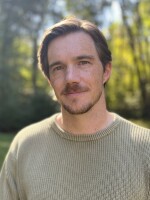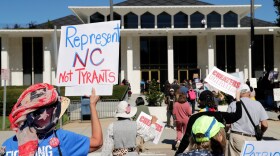Every decade, state lawmakers across the country embark on the process of taking U.S. Census data to draw new political boundaries. That process, known as redistricting, has begun in North Carolina.
This fall in Raleigh, legislators will establish new lines for 14 Congressional seats and all 170 General Assembly districts. The exercise of redistricting began this summer first with new census data arriving, and then public comments across the state.
In the weeks ahead, legislators will approve new districts. And this all has significant ramifications from the Mountains to the Coast to Capitol Hill. The new districts will influence policy, candidates, and ultimately the political landscape for years to come.
For the next few weeks, WUNC is focusing on redistricting — the process, history, terminology, litigation, and much more — in a special series called Behind The Lines.

One Person One Vote: Stemming from a 1964 Civil Rights era Supreme Court case, this terms requires that federal and state districts have roughly equal populations. Legislators may count all people living in a district toward a constituency. This edict prevents millions of voters from being packed into one district and having their electoral voice disproportionately diminished. In order to determine the ideal size of a district, you can apply some simply math. Take North Carolina’s population in the U.S. Census of about 10.4 million people and divide it by the number of districts. So for the 14 U.S. House seats, each district should be about 742,000 people. (Note: Districts can legally vary by 5%.)

Gerrymandering: Probably the most notorious term linked to redistricting, gerrymandering was named in honor of former Massachusetts Governor Elbridge Gerry (pronounced “Gary”.) In practice, gerrymandering is drawing oddly shaped districts that maximize power for one political party and diminish the voice of others. Gerrymandering has long been legal in the United States. Racial gerrymandering was outlawed in the 1960s, and numerous state and federal legal challenges have followed. Partisan gerrymandering has long remained legal as well, with the U.S. Supreme Court ruling in 2019 that the issue does not have justiciability. In other words, the federal court said stop with partisan gerrymandering lawsuits, this issue isn’t for us. However, a panel of three North Carolina superior court judges ruled later in 2019 that districts here were illegal partisan gerrymanders. It was an unprecedented ruling and will have an impact on the 2021 redistricting cycle.

Packing: No suitcase needed. Packing is the idea that a disproportionate number of Democrats or Republicans are packed into a particular district, siphoning them off from an adjacent district, and thus making both districts less competitive. Consider the 2018 election when North Carolina’s 13 U.S. House seats went for 10 Republicans and three Democrats. In a state that is roughly evenly divided, that is a disproportionate outcome. Another way to underscore this from 2018 is to point out that the districts where Democratic candidates won, packing enabled G.K. Butterfield, David Price and Alma Adams to carry 69, 72 and 73% of the vote, respectively. For comparison’s sake, Republicans, who were opposed, all won with between 51 and 59% of the vote.
(Note: A Republican won North Carolina’s 9th Congressional district but due to election fraud, that election had to be held again.)

Cracking: This is more or less the opposite of packing – splitting a constituency that is decidedly blue or red – so as to limit its collective punch at the polls. Notable, this has happened recently in Greensboro on the campus of North Carolina A&T. Another example of cracking comes from western North Carolina, where Democrat Heath Shuler won election to Congress in 2006 thanks in no small part to Asheville. But after Republicans took back the General Assembly in 2010, and handled redistricting in 2011, they decided to split the progressive urban areas into two different districts – the 10th and 11th. Shuler elected not to run again. Republican Mark Meadows won the seat in 2012. Madison Cawthorn serves the district today.

Criteria: This is the (variable) set of factors lawmakers consider when drawing new districts: compactness, contiguity, population, race, and political history. For this round of redistricting, state lawmakers have stated they will not consider political data, citing that 2019 state court ruling.
WUNC Social Media Producer Natalie Dudas-Thomas contributed to this report.









